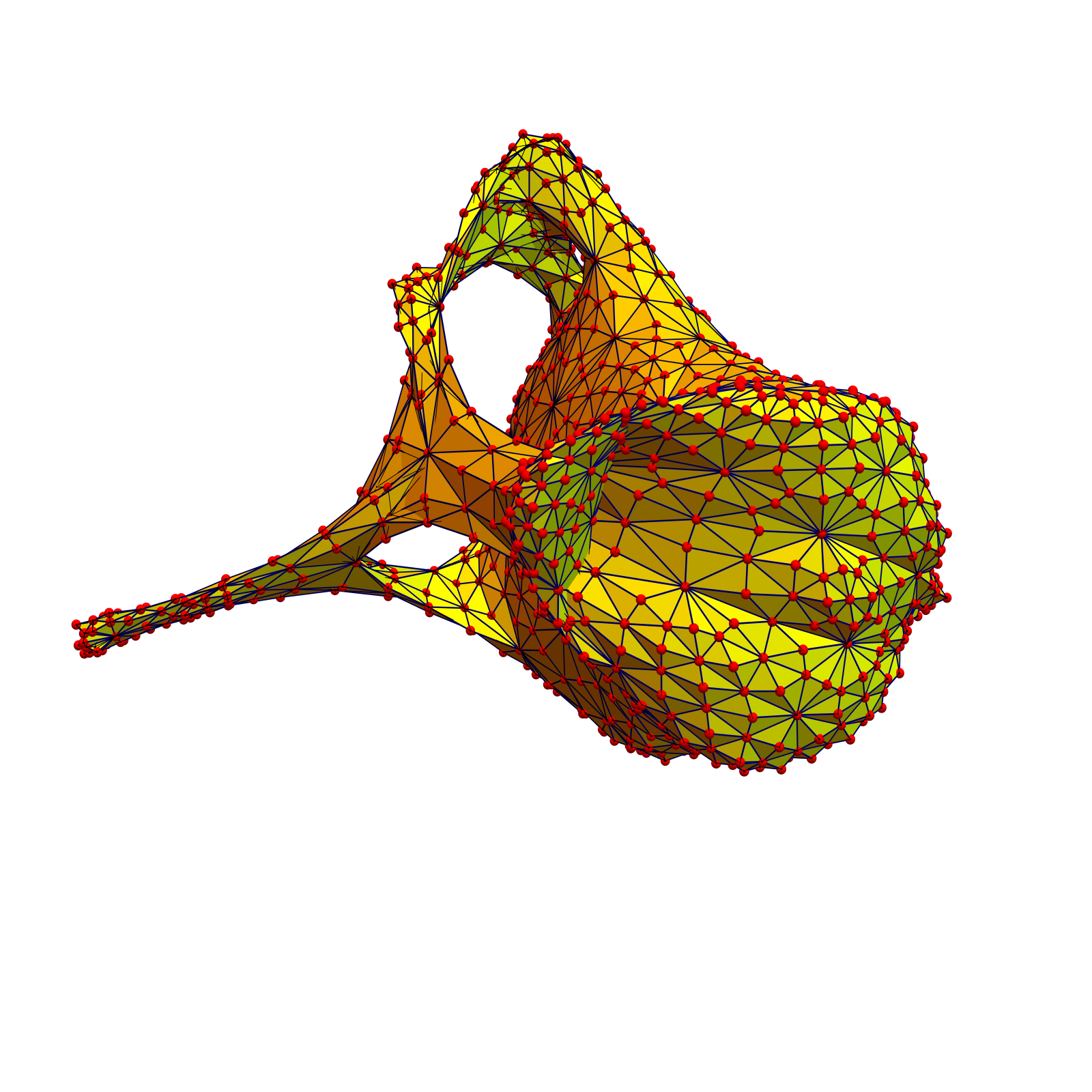In this recent paper the topic of level surfaces in a d-graph is studied. This is a core calculus topic and belongs to quantum calculus, as space is a discrete space which has properties shared by Euclidean space like that unit spheres are graph theoretical spheres (removing one vertex produces a contractible graph and recursively, every unit sphere is a sphere). One application is the visualization of Chladni surfaces as seen in the following video:
The definition of a level surface of a function f on the vertex set of the graph G is the following: consider the set of all complete subgraphs of G and connect two of these “points” if one is contained in the other. This is a larger graph G’ called Barycentric refinement of G. Now look at the subgraph of G’ which has as vertices all complete subgraphs of G on which the function f changes sign. The magic is that if G is a d-graph, then this level surface { f=c } is a (d-1) graph
as long as the value c is not taken by any vertex of G.
[metaslider id=53]
If we are given k functions, we can start with the first function, look at its level surface f1=c1, then extend the other functions to this new graph, then look at the level surface f2=c2 etc. For almost all values c1,…,ck, this produces a d-k graph. This is a discrete Sard result. However, there is a catch: the order of the functions matters (no surprise in a quantum setting) but the regularity is very helpful.
Closer to classical calculus is to look at k functions f1,…,fk and now look at all simplices in G’ on which all functions simultaneously change sign. Now the set of values c1,…,ck for which we get a (d-k) graph has positive measure in general. We are however closer to classical calculus or algebraic geometry.
Here is the simplest case: take a 2-graph (the discrete analog of a two dimensional surface) and two functions f,g. A Lagrange problem is to find the extrema of f under the constraint g=c. One can now do this in the same way as in classical
multivariable calculus: define the discrete gradient of f on a triangle (xyz) rooted at a vertex x as the two vector df =
Now, if the gradients df and dg are not parallel, then the simultaneous zero locus { f=c, g=d } is a discrete set. Only points for which the Lagrange equations df = L dg, g=c hold are candidates for extrema for f.
More generally, in higher dimensions, the discrete algebraic set {f1=c1,….,fk=ck} is a d-k graph, if at every point, the discrete gradients satisfy a maximal rank condition.
This topic of doing calculus without limits is not only a game. It can be used to investigate completely unexplored problems like classifying the nature of level surfaces of the ground state of the Laplacian in a graph. The ground state is the eigenvector to the smallest nonzero eigenvalue. It has one connected nodal surface (both in the graph (Fiedler) as well as in the Riemannian manifold case (Courant)) by the Courant-Fiedler theorem. What is the topology of this surface if G is a d-sphere? This question can be explored now in a combinatorial setting. If the answer would be that the nodal surface is a d-1 sphere, then this would be a strong indication that the same holds also in the continuum.
